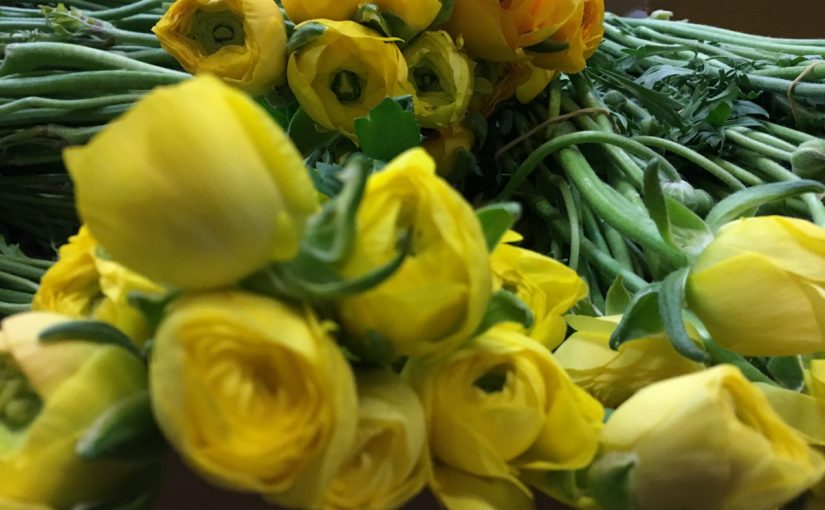This final module was all about how to harvest and properly care for your flowers to ensure maximum vase life. Especially the harvesting portion of this module took heavy inspiration from The Lean Farm; How to Minimize Waste, Increase Efficiency, and Maximize Value and Profits with Less Work by Ben Hartman. Erin kept emphasizing that you don’t want to be wasting energy, taking extra steps, or going out of your way to get a task accomplished. She also went over best time to harvest specific varieties, including dahlias, snap dragons, peonies, Iceland poppies, etc.
In the post-harvest handling section, Erin broke down flower food (they use sugar, acidifier, and biocide), including “Quick Dip,” Hydration Solution, Holding Solution, and Flower Food. Each one has a different ratio of the three ingredients, depending upon what you need/final destination of the flowers. For example, Holding Solution has very little sugar and would be used to hold flowers if their final destination is wholesale or grocery while Flower Food has a lot more sugar and would be used to get flowers to really blow open if you were using them in a wedding arrangement. Just as a note, you can’t use these products if you are certified organic.
All of the flowers cut on Floret fall into various categories as well and will dictate how best to treat them in order to increase vase life. Whimpy Drinkers or things that wilt really quickly (i.e. hydrangea, mint, scented geranium) would be dipped in “Quick Dip” and put into Hydration Solution. Woody Branches (i.e Crab Apple branches, Nine Bark) would get the same “Quick Dip” then Hydration Solution, but you would want to “X” the bottom to ensure water can get up into the branch. Sappy Stems or things that ooze sap upon cutting (i.e. euphorbia, daffodils) would be put in boiling water for 7-10 seconds, sealing the stem up so it would leak any longer and put into Hydration Solution. Dirty Flowers or flowers that turn the water murky or brown really quickly (i.e rudbeckia, yarrow) you would want to use a CCB (chlorine) tab or bleach in the bucket prior to harvesting.
Dahlias and Iceland poppies also can be tricky, but Erin shared some tips for them. Both need their stems heated. Dahlias, you would put them in boiling water and let the water cool. This will allow better water circulation through the flower. Iceland poppies can also react positively to boiling water, but you can also flame torch the tips of their stems.
In terms of packaging, consistency and quality is key. Because local flowers are way fresher than flowers brought in from South America or California, there is a huge niche market available to local growers. However, there is a standard of quality and consistency in the floral industry and if you don’t match (and exceed) that standard, it won’t matter how local or fresh your flowers are. Ensuring long stems, clean stems, and quality packaging will ensure long-term customers.
Finally, Erin went over how to make market bouquets (these make up 60% of their sales!) Elements of these bouquets include focal flower, filler (2-3 types), spike, disk, and air. They can make 60 bouquets in an hour by treating market bouquet making as a assembly line.

Photo: Allie Kuppenbender
RESOURCES:
Floret Online Workshop, Module 6: Harvesting & Care for Cut Flowers
Hartman, Ben. The Lean Farm; How to Minimize Waste, Increase Efficiency, and Maximize Value and Profits with Less Work. Chelsea Green, 2015.
